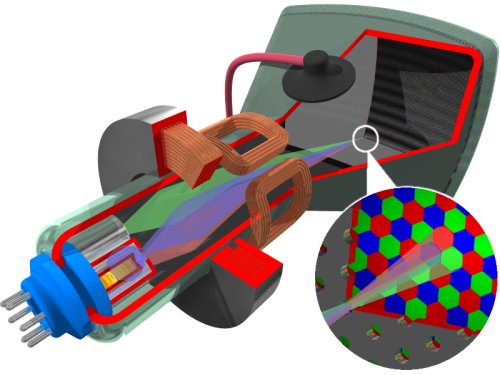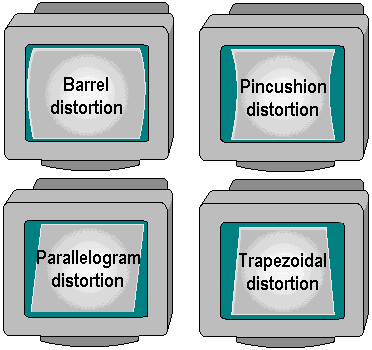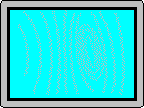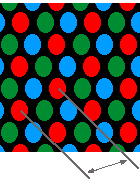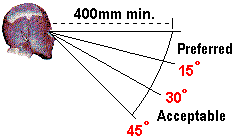The maximum resolution of a monitor is dependent on more than just its highest scanning frequencies. Another factor is dot pitch, the physical distance between adjacent phosphor dots of the same colour on the inner surface of the CRT. Typically, this is between 0.22mm and 0.3mm. The smaller … [Read more...]
Monitor Interlacing
Back in the 1930s, TV broadcast engineers had to design a transmission and reception system that satisfied a number of criteria: that functioned in harmony with the electricity supply system was economic with broadcast radio wave bandwidth could produce an … [Read more...]
CRT Monitor Resolution and Refresh Rates (VSF)
The most important aspect of a monitor is that it should give a stable display at the chosen resolution and colour palette. A screen that shimmers or flickers, particularly when most of the picture is showing white (as in Windows), can cause itchy or painful eyes, headaches and migraines. It … [Read more...]
The Anatomy of a CRT Monitor (and CRT TVs)
Most CRT monitors have case depths about as deep as the screen is wide, begging the question what is it that's inside a monitor that requires as much space as a PC's system case itself? A CRT is essentially an oddly-shaped, sealed glass bottle with no air inside. It begins with a slim neck and … [Read more...]
Monitor Controls
Not so long ago, advanced controls were found only on high-end monitors. Now, even budget models boast a wealth of image correction controls. This is just as well since the image fed through to the monitor by the graphics card can be … [Read more...]
Electron Beam Monitors
If the electron beam is not lined up correctly with the shadow mask or aperture grille holes the beam is prevented from being passed through to the phosphors, thereby causing a reduction in pixel illumination. As the beam … [Read more...]
Enhanced Dot Pitch Monitors
Developed by Hitachi, EDP is the newest mask technology, coming to market in late 1997. This takes a slightly different approach, concentrating more on the phosphor implementation than the shadow mask or aperture grill. On a typical shadow mask CRT, the phosphor trios are more or less arranged … [Read more...]
Monitor Ergonomics
Whilst the quality of the monitor and graphics card, and in particular, the refresh rate at which the combination can operate is of crucial importance in ensuring that users spending long hours in front of a CRT monitor can do so in as much … [Read more...]
TCO Monitor Standards
In 1995, TCO modified the requirements for visual ergonomics and added a range of conditions to cover environmental issues, including the use of certain chemicals in manufacturing and the recycling of components. The most stringent standard … [Read more...]
Safety Standards For Computer Monitors
In the late 1980s concern over possible health issues related to monitor use led Swedac, the Swedish testing authority, to make recommendations concerning monitor ergonomics and emissions. The resulting standard was called MPR1. This was … [Read more...]
